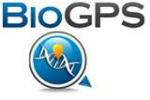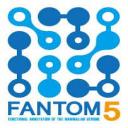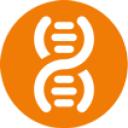A free extensible and customizable gene annotation portal, a complete resource for learning about gene and protein function (see Wu et al., Genome Biol 10, R130, 2009.)
...continue to readThe DNV database (dbDNV) has been established to promote more accurate variation annotation. Aside from the flat file download, users can explore the gene-related duplications and the associated DNVs by DGL and DNV searches, respectively
...continue to read
Add to my favorites
Remove from my favorites
EMBL European Bioinformatic Istitute
Category: Gene information search, Protein informations
Subcategories: EMBL
EBI (EMBL European Bioinformatic Istitute) home page provides a central access point to search several databases for information on genes, proteins, enzymes etc.
...continue to read
Add to my favorites
Remove from my favorites
a public archive and repository where nucleotide sequences generated by next-generation sequencing methodologies can be submitted
Category: Gene information search
Subcategories: EMBL
ENA (European Nucleotide Archive) operates as a public archive and repository where nucleotide sequences generated by next-generation sequencing methodologies can be submitted. Data can be searched interactively and programmatically using free text and sequence similiary search based queries. It is a useful utility also for patent data search.ENA
...continue to read
Add to my favorites
Remove from my favorites
Encyclopedia of DNA Elements
Category: Gene information search, Gene expression
A major goal of the Encyclopedia of DNA Elements (ENCODE) is to annotate all functional elements of the human genome including protein-coding genes, pseudogenes, and non-coding transcribed loci and to catalog the products of transcription including splice isoforms and regulatory elements that control the cells and circumstances in which a gene is active.
...continue to read
Add to my favorites
Remove from my favorites
browsing genes and genomes
Category: Gene information search
Ensembl, a genome browser project, produces genome databases for vertebrates, and makes this information freely available online.
...continue to readThe EST database (NCBI) is a collection of short single-read transcript sequences from GenBank. These sequences provide a resource to evaluate gene expression, find potential variation, and annotate genes.
...continue to readThe Expression Atlas provides information on gene expression patterns under different biological conditions such as a gene knock out, a plant treated with a compound, or in a particular organism part or cell. It includes both microarray and RNA-seq data. The data is re-analysed in-house to detect interesting expression patterns under the conditions of the original experiment. There are two components to the Expression Atlas, the Baseline Atlas and the Differential Atlas. The Baseline Atlas displ
...continue to readThe transcribed enhancer atlas holds ~40.000 enhancers that are detected by bidirectional capped transcription, using the FANTOM5 CAGE expression atlas encompassing 135 primary cell and 432 tissue samples from human (Andersson et al.Nature 507,455–461, 2014)
...continue to readGeneCards maintained by Weizmann Institute of Science is a searchable, integrated, database of human genes that provides concise genomic, transcriptomic, genetic, proteomic, functional and disease related information on all known and predicted human genes.
...continue to readThe Genome database (NCBI) provides views for a variety of genomes, complete chromosomes, sequence maps with contigs, and integrated genetic and physical maps. The database is organized in six major organism groups: Archaea, Bacteria, Eukaryotae, Viruses, Viroids, and Plasmids and includes complete chromosomes, organelles and plasmids as well as draft genome assemblies.
...continue to readThe Genome Data Viewer, NCBI genome browser, allows you to view and search an organism's complete genome, display chromosome maps, and zoom into progressively greater levels of detail, down to the sequence data for a region of interest.
...continue to read
Add to my favorites
Remove from my favorites
searchable collection of complete and incomplete large-scale sequencing, assembly, annotation, and mapping projects for cellular organisms
Category: Gene information search
Subcategories: ncbi
The NCBI Entrez Genome Project database is intended to be a searchable collection of complete and incomplete (in-progress) large-scale sequencing, assembly, annotation, and mapping projects for cellular organisms. The database is organized into organism-specific overviews that function as portals from which all projects in the database pertaining to that organism can be browsed and retrieved (see Figure 1). For example, you will find all information regarding the human genome project on this pro
...continue to read
Add to my favorites
Remove from my favorites
Gene Expression Omnibus
Category: Gene information search
Subcategories: NCBI
GEO is a public functional genomics data repository supporting MIAME-compliant data submissions. Array- and sequence-based data are accepted. Tools are provided to help users query and download experiments and curated gene expression profiles.
...continue to read
Add to my favorites
Remove from my favorites
The Genotype-Tissue Expression Consortium
Category: Gene information search
The GTEx Consortium adopts a strategy called expression quantitative trait loci (eQTL) mapping that allows the researchers to generate a comprehensive catalogue of associations between genetic variation and gene expression across many tissues in many individuals. The processed data are available in this website (see: Nat Genet. 2013 June ; 45(6): 580–585; Ward & Gilad Nature 550:190, 2017).
...continue to read
Add to my favorites
Remove from my favorites
Category: Other topics, Gene information search
Subcategories: NCBI
GeneTests Web site is a publicly funded medical genetics information resource developed for physicians, other healthcare providers, and researchers, available at no cost to all interested persons.
...continue to readGypsy Database (GyDB) is an open editable database devoted to the evolutionary dynamics of viruses and transposable elements based on their phylogenetic classification (Llorens et al., Nucleic Acids Res 39:D70, 2011).
...continue to readBy extensive analyses of all human transcripts, H-InvDB (Integrated DB of Annotated Human Genes) provides curated annotations of human genes and transcripts that include gene structures, alternative splicing isoforms, non-coding functional RNAs, protein functions, functional domains, sub-cellular localizations, metabolic pathways, protein 3D structure, genetic polymorphisms (SNPs, indels and microsatellite repeats) , relation with diseases, gene expression profiling, and molecular evolutionary f
...continue to readHERVd (Human Endogenous Retrovirus DB) is a database compiled from the human genome nucleotide sequences obtained mostly in the Human Genome Projects. It is a relatively simple and fast environment for screening human genome for endogenous retrovirus.
...continue to read
Add to my favorites
Remove from my favorites
unique gene symbols and names
Category: Gene information search












